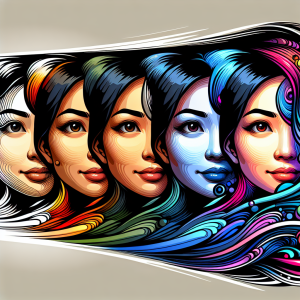Imagine a vibrant world where laughter is frequent, and the heroes are often four-legged. The 1970s and 1980s gave birth to a plethora of vibrant characters—especially the unforgettable cartoon dogs that filled our screens with joy and sparked our imaginations. These beloved furballs not only entertained us but also became icons of friendship and adventure. Today, we take a stroll down memory lane to celebrate these furry companions that helped define a generation.
1. The Rise of Cartoon Dogs: A Cultural Phenomenon
The 70s and 80s saw a dramatic shift in animation and children’s programming. With an increasing number of television channels and the advent of Saturday morning cartoons, the stage was set for cartoon dogs to not just exist, but thrive. From household pets turned heroes to wild and wacky companions, these canines captured the hearts of children and adults alike.
2. Snoopy: The Iconic Beagle
No discussion about cartoon dogs from the 70s and 80s would be complete without mentioning Snoopy, the beloved beagle from Charles Schulz’s “Peanuts.” First introduced in 1950, Snoopy’s popularity surged throughout the following decades. With his imaginative adventures as an aspiring writer and World War I flying ace, Snoopy embodied every child’s dream of exploration. His whimsical attitude and iconic catchphrases, such as “Good grief!” resonated with audiences, making him a timeless character.
3. The Scooby-Doo Phenomenon
Just as unforgettable, Scooby-Doo emerged in 1969 and quickly became a staple of pop culture. The Great Dane, with his unique appetite and knack for solving mysteries alongside his human friends, epitomized loyalty and comic relief. The charm of Scooby-Doo lay not just in his antics but also in the character dynamics—Shaggy’s endless fear and insatiable hunger matched with Scooby’s brave heart created a delightful duo that is cherished to this day. Over the decades, “Scooby-Doo, Where Are You!” generated numerous spin-offs, solidifying its place in our hearts.
4. The Loveable Brian Griffin
In a different vein, we have Brian Griffin from “Family Guy.” First appearing in 1999, Brian reflects humanity’s contradictions—often acting more like a human than a dog. This anthropomorphic character brought satire and humor to a new level. Although technically outside our targeted decade, Brian’s complex persona represents the evolution of cartoon dogs from sidekick to leading character, signaling a shift that began in the 70s and 80s.
5. Other Notable Cartoon Dogs of the Era
5.1. Astro from The Jetsons
Astro, the lovable Great Dane from “The Jetsons,” represented the optimistic view of the future that characterized the 60s and 70s. His goofy personality and frequent interjections of “Ruh-roh!” endeared him to fans, reminding us all of the joys and simplicity a pet brings to our lives.
5.2. Huckleberry Hound
“Hey there, Huckleberry Hound!” This jovial blue dog, with his southern charm, was a star of his own show. Known for his easygoing demeanor and trademark catchphrases, Huckleberry Hound was a classic character who represented a laid-back lifestyle, capturing the essence of fun in animation.
5.3. Odie from Garfield
In the realm of comic strips that leaped into animated shows, we can’t forget Odie, Garfield’s dimwitted and loyal canine friend. Odie provided endless comic relief to the lasagna-loving cat’s antics, making their rivalry and friendship a dynamic duo filled with laughter.
5.4. Gromit from Wallace and Gromit
Though emerging later, in the 1980s, Gromit from “Wallace and Gromit” was a silent yet genius dog that stole hearts with his expressive face and loyalty. His creative endeavors with his owner showcased an intelligence rarely seen in animated pets, highlighting the bond between man and dog.
6. The Impact of These Cartoon Dogs on Society
These cartoon dogs weren’t just characters; they reflected societal values of friendship, loyalty, and resilience. Through humor and adventure, they taught generations about the importance of companionship. As kids, we learned valuable lessons about trust, bravery, and the joys of having a pet. The influence of these furry friends extends beyond the screen, shaping our imaginations and defining our childhood experiences.
7. Legacy and Nostalgia: The Enduring Love for Cartoon Dogs
Decades later, these characters remain relevant in today’s culture. Merchandise, remakes, and nods in popular culture ensure that these iconic dogs continue to attract new generations. When audiences hear their famous lines or see their recognizable silhouettes, nostalgia floods back, reminding us of simpler times filled with laughter and joy. Whether through reboots or homage in contemporary cartoons, the spirit of these furry friends lives on.
8. Conclusion: The Unforgettable Furry Friends
As we reminisce about the cartoon dogs of the 70s and 80s, we recognize how these characters not only entertained us but contributed to our understanding of loyalty and companionship. They were templates of laughter, courage, and creativity, reflecting the beauty of imaginative storytelling. So, let’s raise a glass (of water, of course) to these furry friends who are forever etched in our hearts and memories!
FAQ: Furry Friends on Screen
What were some of the most popular cartoon dogs of the 70s and 80s?
Some popular cartoon dogs from the 70s and 80s include Snoopy from “Peanuts,” Scooby-Doo from “Scooby-Doo, Where Are You!,” Huckleberry Hound, and Astro from “The Jetsons.” Each character brought unique charm and humor to the screen.
How did cartoon dogs impact childhood experiences?
Cartoon dogs served as companions through adventures and lessons. They offered humor and warmth while teaching values such as friendship, loyalty, and problem-solving. Their antics often mirrored children’s own experiences and challenges, providing relatable content during formative years.
Why do cartoon dogs remain popular today?
The themes of loyalty, adventure, and humor depicted through these cartoon dogs resonate across generations. Their endearing personalities continue to be a source of nostalgia, leading to merchandising, remakes, and references in new shows, ensuring their relevance in contemporary culture.
Are there any modern cartoons inspired by these classic cartoon dogs?
Yes! Many modern shows pay homage to classic cartoon dogs through reboots or character inspiration. Shows like “The Amazing World of Gumball” and “Adventure Time” often contain nods to the empathetic, goofy nature commonly seen in the furry friends of yesteryears.
How can I share my love for these cartoon dogs with my children?
Introduce classic cartoons during family movie nights, share comic strips, or even create themed crafts based on these beloved characters. Discuss their adventures and values with your children, ensuring that the legacy of these furry friends continues.








+ There are no comments
Add yours